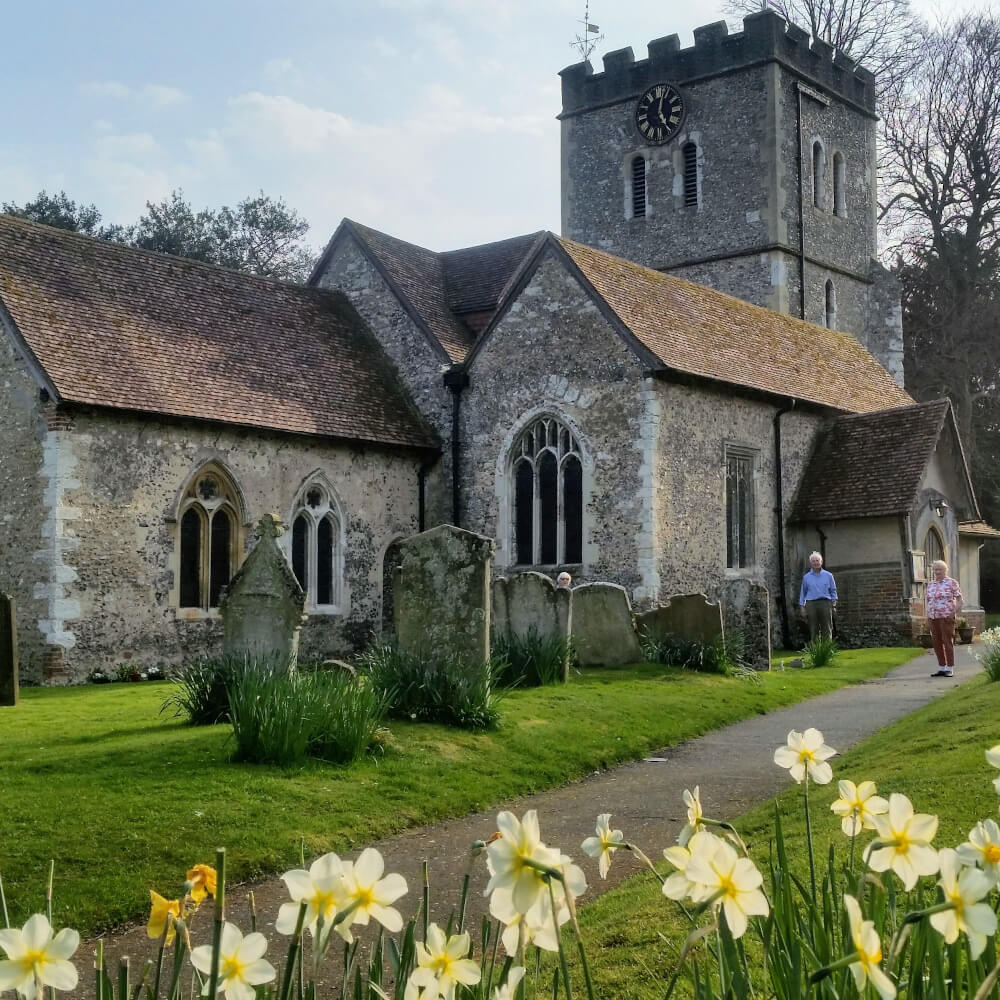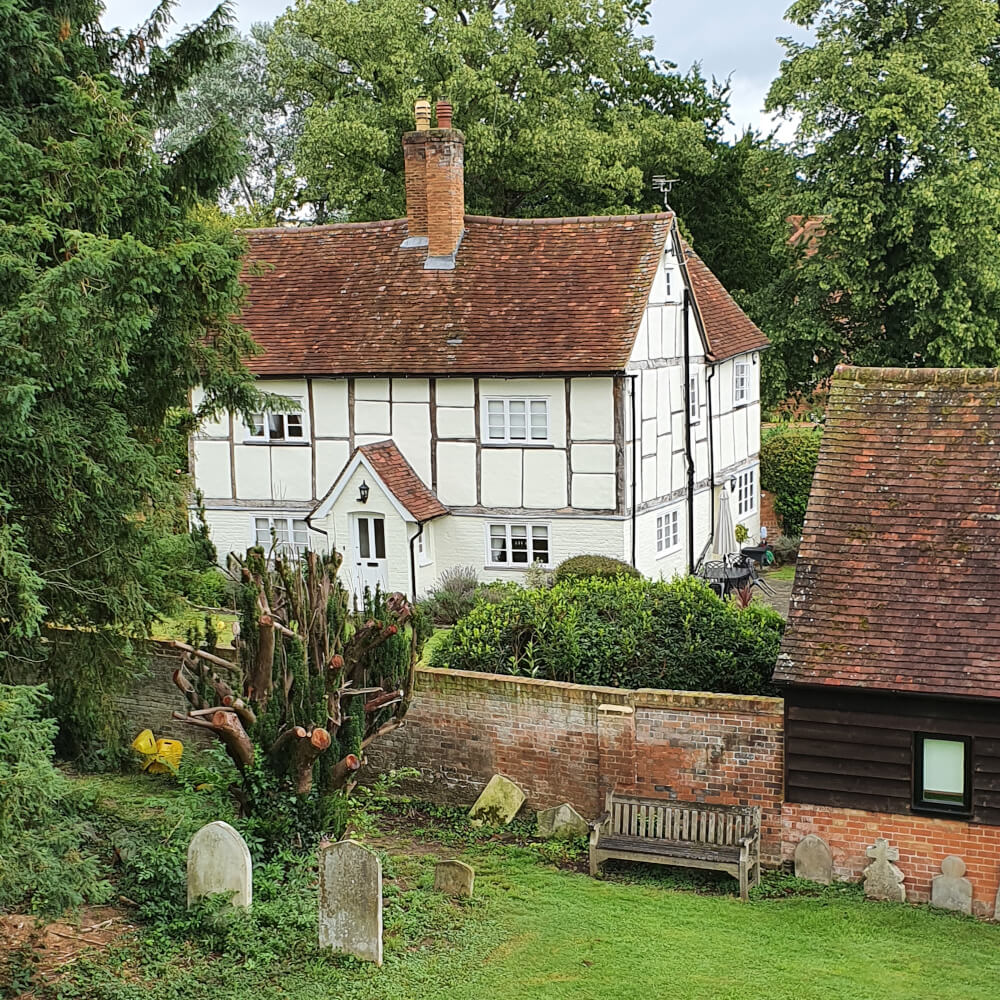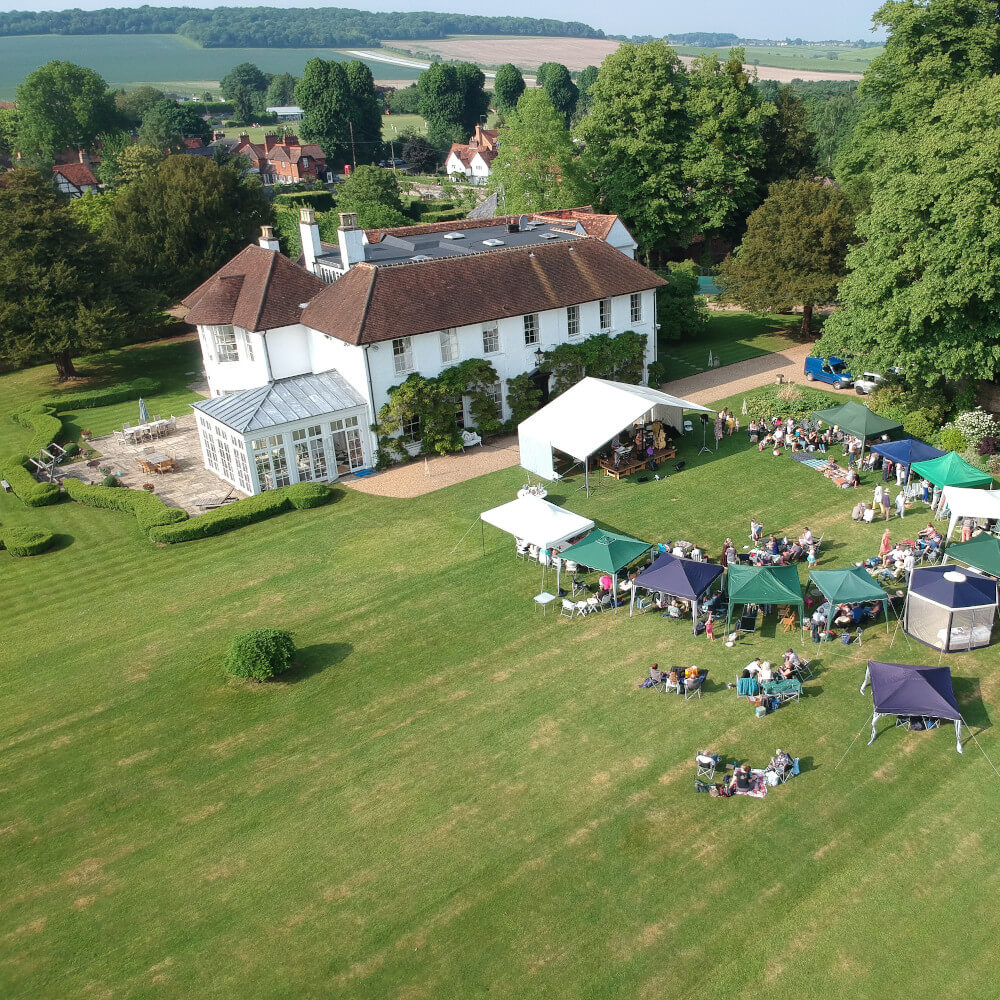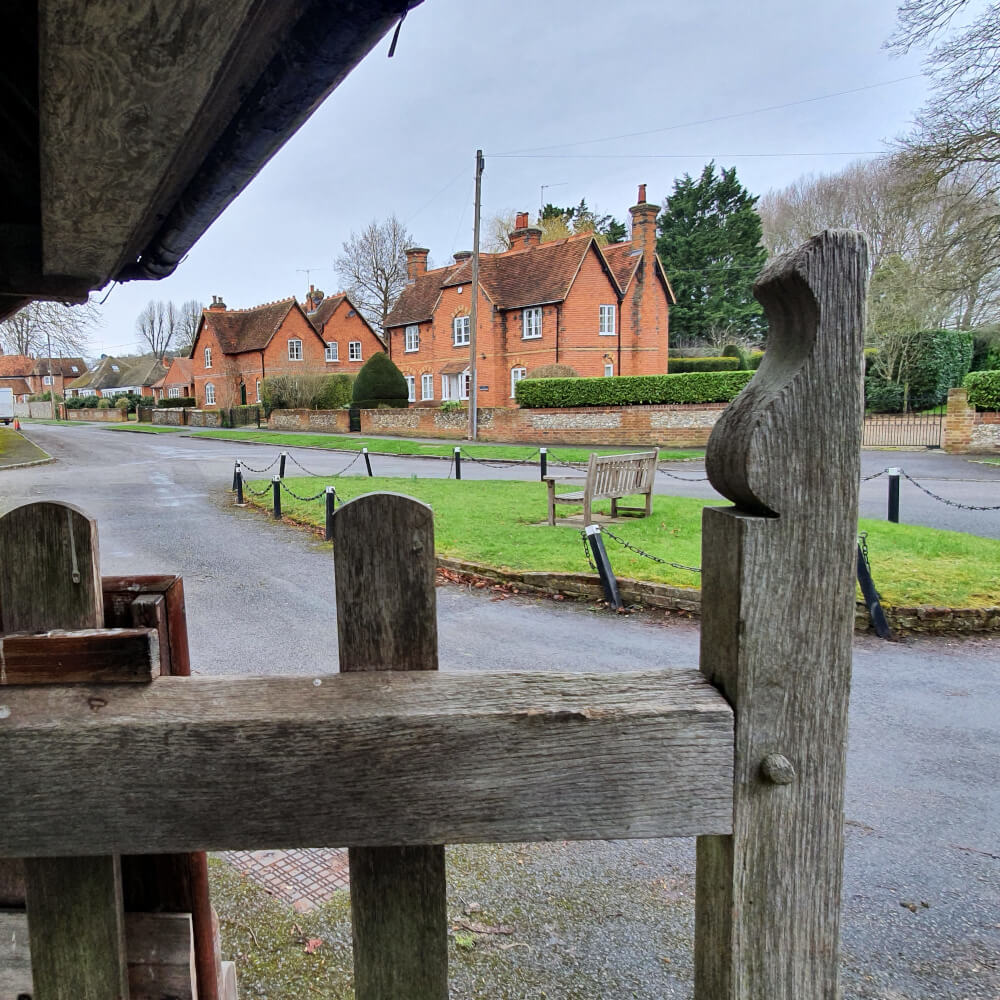

Heritage
St John the Baptist Little Marlow
It is difficult to imagine a more quintessentially English scene, or one more satisfying to the imagination, than that which lies before the visitor pushing open the centrally pivoted swinging lych-gate leading to the small grey church of St John the Baptist. (The Ancient church of St John the Baptist Little Marlow by Patricia Burstall)
It would be easy to imagine that time has passed by this small corner of England, but this is far from the truth. The church, which was founded around 1190, (150 years after the Norman Conquest) is located close to the river Thames, a major route-way up to modern times. In the Covid years, the charm of the village and church have been popularised by the national media with their proximity to a beautiful nature reserve and scenic riverside walks.
The church was not originally built as a whole structure, but has been gradually enlarged, added to and altered, throughout succeeding centuries. The chancel (where the main altar is situated) dates from around the 12th century. The tower at the eastern end and the north aisle (where you enter), are both 14th century. The nave (central aisle) and south aisle (R as you face the altar) are both 15th. The church has also been changed internally too, in order to meet the religious and political requirements of the times, as well as those of changing tastes and priorities.
Opening onto the chancel is a quiet side chapel, built in 1430 for the repose of Nicholas Ledewich. His memorial and that of his wife Alice, lie beneath a shallow stone archway linked to the chancel. It is probable that walls of this chapel and the chancel would have originally been painted with colourful scenes from the bible and lives of the saints. It seems likely that these were obliterated under a coat of white wash, following the ‘Putting away of books and images Act' of 1549. They were obscured still further in the 18th to 19th centuries, when memorial plaques to the local gentry were attached to the walls.
Nicholas Ledewich retains a place in history as a soldier who fought at the battle of Agincourt in 1415. As a senior retainer to John de Mowbray, (Earl Marshall of England), Ledewich was part of the armed contingent provided by Mowbray to Henry Vth. for this battle. Sadly, the helmet, arms and brass plate that once decorated the tomb of Nicholas Ledewich, have long since disappeared. Fortunately the brass of his wife still remains intact, with her little dog lying peacefully at her feet. However, exactly why Nicholas and Alice came to choose the church at Little Marlow as their final resting place, is a mystery yet to be resolved.

Another intriguing feature of the Ledewich chapel is the East window with its patchwork of glass fragments. These include a dove and shield, all dating from the 15th century. The window may have been broken during the Reformation under the reigns of Henry V111 or Edward V1. After the break with the Pope and Rome, churches were 'simplified' following the Protestant model. Stained glass windows with holy scenes were removed (statues and other precious reliquaries too). Another possibility is that the window was smashed by Parliamentarians during the English Civil War 1642-46. During this time, the area of Little Marlow was a Parliamentary stronghold. Colonel Scott, who lived less than half a mile away at Westhorpe Manor was one of the signatories for the execution of Charles 1st.
Apart from the Ledewich, the colourful windows in the church today date from the mid-1800s. In 1866 our Victorian forebears undertook a major restoration of the church fabric. This included removing and replacing the box pews of the 18th century. The new pews that replaced them, were intended to seat a congregation of 276! Though now reduced in number, they are the very ones you see today. Part of the church floor was also retiled at this time.. Fortunately, a few of the original medieval tiles still remain in the porch of the North door. A fleur de Lys, is one of the designs, drawing us back to our distant links with Norman France.
Each generation has made its mark on the church and will continue to do so. With such an ancient building on-going renovation and restoration is as inevitable as it’s expensive. So far this small church has managed to survive war, plague, tempest and religious fanaticism. It has seen kings, queens and governments come and go. Though set in a backwater, it has somehow managed to retain a finger on the pulse of history. It has remained a valued symbol of Christian life throughout the centuries and with God’s blessing, will continue to do so for centuries to come.
Wendy Osborne Feb 2022


Little Marlow village
Here is a quiet retreat from the Hurley burly of main roads, as this no through road takes you through the village, colourful with its brick cottages, small village green two pubs, The kings Head and The Queens Head, past the fine brick and flint wall on the right which hides the Manor House and gardens, to the lychgate of the church.
Little Marlow is mentioned in the Domesday Book, but long before that, there were people dwelling in the area near the river. Bronze Age remains were found when the area was excavated for gravel. Domesday mentions several Manors the boundaries of which are uncertain, but the three most important seem to have centred on the area round Little Marlow Church, the Abbey at Well End and Westhorpe.
Little Marlow Manor House
From the gates of the Manor, next to the churchyard the drive sweeps up through a fine avenue of trees to the house. The main front is a good example of the Georgian period of affluence, but the origins of the house go back a further two centuries to the time when Queen Elizabeth held sway over another period of prosperity and expansion.